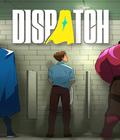Relayer is set in the future, after mankind has ventured to the stars and even colonized Mars. In doing so, they attracted the attention of the Relayers, powerful aliens with the technology to manipulate gravity. Humanity can only stand against them with reverse-engineered Stellar Gear robots, which have a very specific limitation: They can only be piloted by a Starchild, or a human who has been gifted with special powers. The game follows Terra, the Starchild of Earth, who is drawn into a conflict against the Relayers when her long-lost sister Luna appears among them. She sets out to find a way to save her sister — and the world — before it's too late.
Relayer's plot is reminiscent of Super Robot Wars, where six or seven different anime series plots are smashed together, albeit in a single cohesive setting. The result is mildly bewildering. The game jumps from plot to plot with little rhyme or reason, villains are introduced and disposed of quickly, and there's no real driving force to the plot until the very end; there just random fights against either the Relayers or evil government faux-Starchildren. The cast is too large for its own good, which makes it difficult for several characters to shine, especially since a few only join near the end of the game.
The characters are fine, but the story feels like it lacks impact without rhyme or reason. Horrific things are often glossed over, but other times, they are pivotal to the plot, and the story can never quite make up its mind. By the end, I was exhausted by the fifth plot twist in as many stages. It was a fine story that keep my attention, but I'm not interested in seeing any more of it. The villains are one-note, with most of them being evil or destined to change sides.
Relayer is a standard turn-based strategy RPG. Initial visual comparisons to Super Robot Wars might seem obvious, but it is a lot like a standard fantasy RPG. Your units even have classes like Knight, Ninja, Paladin and Wizard. The robot aesthetic is mostly visual, and the game has more in common with Fire Emblem than it does SRW.
Attacks in Relayer are determined by your equipped weapon. Swords are range 1, machine guns are range 2, rifles are range 3 and bits are range 4. That means they can only attack at that specific range, barring certain rare skills. Likewise, enemies can only counterattack if someone is using the same weapon. This builds up what is supposed to be Relayer's weapon triangle. Generally, you'll want to attack enemies where they can't hit back. Sword and machine guns are frontliners who go after squishy victims and sniper rifle users, while the back line softens up the front line.
Combat can be fun and rewards careful thinking about unit positioning, but it also feels lackluster. The variety of difference in ranges makes it feel like the only thing to not do is use the same unit against each other. The lack of counterattacks can slow down things. The game offers items and abilities that can make your counters stronger, but since you can only counter about one-fourth of any given unit on a stage, it is barely worth it because it drags things out.
This is mildly alleviated by the other big mechanic, the aggro system. Every time a unit takes an action, it builds aggro, which is displayed as a clear number on its status. Enemies prioritize whatever unit has the highest aggro, but if two units have similar numbers, the enemy prioritizes whoever has lower HP. The Tank class can increase its own aggro to draw attacks to them, and several other units can manipulate aggro up or down. As time passes or damage is taken, aggro can slowly drop, and if it drops too low, your squishy backliners may suddenly become top priority.
I enjoy the aggro system because it rewards careful management of your unit's abilities. Powerful buffs and debuffs can draw enemy attention as easily as a tank. Likewise, if a tank keeps using its aggro ability to put itself at the top of the list, it can't use its skills to buff its own defenses. It's relatively easy to manipulate, but it feels good when you stat things out enough so that your vulnerable sniper can stay in attack range without getting their robot smashed to pieces.
The biggest problem with Relayer is that about 15 stages in, you've seen basically everything the game has to offer, and it never really changes afterward. You'll see the same enemies, the same basic abilities, the same basic arenas, and most of the bosses are even the same enemy but with different AoE attacks. The numbers get bigger, and that can carry the game for a while, but it quickly wears down. You can make simple combat systems work in games like Fire Emblem or Super Robot Wars, but both of those titles keep a consistent flow of new things and keep the combat quick and smooth.
It might be better if your characters were more interesting, but unfortunately, the game is extremely slow about making characters feel distinct. Each character technically has a specialty, but the differences aren't apparent until level 70. To the game's credit, by the time you get a fully kitted-out character, they have enough interesting variations to keep you interested. It's just that you're almost at the end of the game, and you've basically reached the level of complexity that you get near the start of something like Final Fantasy Tactics or Triangle Strategy.
Alas, the game's class system is incredibly boring. You start with one of four classes: assault, scout, sniper or tank. Each can branch out into one of two paths. Assault can go for either frontline combat or backstabbing, scout for buffs or debuffs, sniper for pure damage or support skills, and tank for pure tank or support skills. Once you've made your choice, you're effectively done. There is a Sphere Grid-like system, but since you have to fill every sphere to advance to the next level, your choices are limited to which skills you grab early on, and then you slowly fill out the rest of the grid. The actual content of the grids is hidden until you spec into one, so you can't plan out which skills are better for which character. This led to me make the "wrong" choice for several characters who gained skills that clearly would've been better on the other path.
In another annoying bit of class design, each "tier" of your class is almost entirely independent of one another. This means that when you first unlock a new tier, you shouldn't use it at all because you'd be sacrificing almost every single ability you have for no gain. Eventually, you'll unlock abilities and can swap over, but it feels bad. If each level had its own distinct feel, that might be less of a problem, but there's an incredibly unsatisfying realization that once you've unlocked the next tier, you can't use it. It's a minor problem in the long run but contributes to everything feeling very similar.
That about covers it. You can replay stages for experience points, and there is a harder difficulty level, but there's not a ton to keep you invested. It's a lengthy game, and despite my complaints, Relayer is a competent strategy game, but it's not a particularly noteworthy one. It's tough to think of anything it offers that other games don't, even if none of its flaws are crippling. It likely depends on how much you love giant robots.
The biggest disappointment about Relayer is the graphics. At first blush, the combat visuals don't seem bad. When two robots attack, there is a cool animation, with special variations if two units are fighting one another rather than one being shot by the other. The animations are impressive, which is good because the game has extremely little variation in the animations. Each weapon type shares the same animations, so once you've seen them a couple of times, they quickly lose their luster. The units don't capture a distinct style for their pilots, so everyone fights the exact same way. I turned off the animations because they take so long to load and play out that they drag down the game. Without the combat graphics, Relayer is bare-bones, with cut scenes that consist of static portraits with a handful of alternate poses. This can be an issue with other games, but even Fire Emblem has more variety than Relayer.
The English voice acting is some of the most inconsistent I've ever heard. Some of the characters sound great and inject genuine emotions and enthusiasm into their roles, while others sound like an intern mumbling into a microphone. It's never quite clear if a new character is going to be a hit or a miss, and the misses are unfortunately a lot more memorable than the hits. The music is OK but not particularly noteworthy, and none of the songs stood out as anything special. Like much of Relayer, the audio is satisfactory.
Do you want a completely average, by-the-numbers strategy RPG that revolves around giant robots? Relayer will probably scratch that itch. If you're looking for anything more than that, it falls flat. Nothing the game offers excels beyond "average," and there are enough nagging flaws and problems that you have to put some effort into getting to the good bits. There's the makings of a better sequel here, but for now, Relayer barely makes the grade.
Score: 7.0/10
More articles about Relayer











 Relayer is a simulation RPG where you lead your troops to victory using strategy & 4 different types of spacecraft!
Relayer is a simulation RPG where you lead your troops to victory using strategy & 4 different types of spacecraft!



















